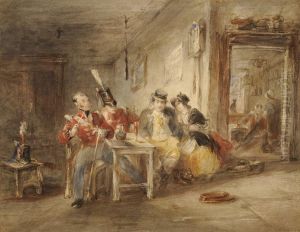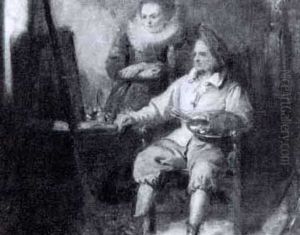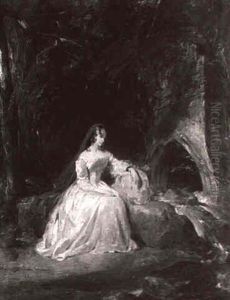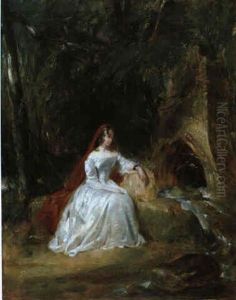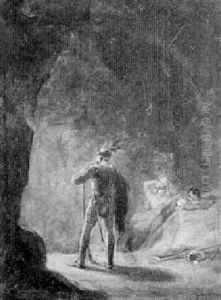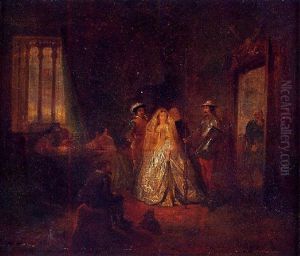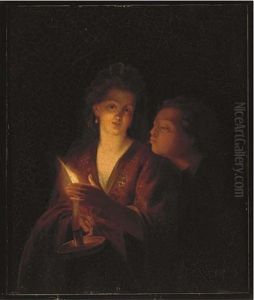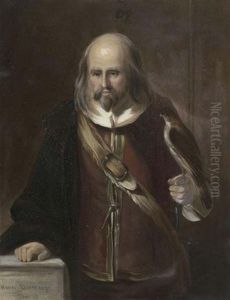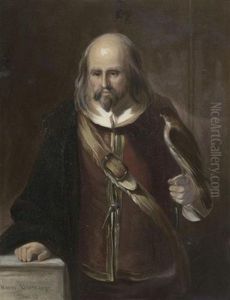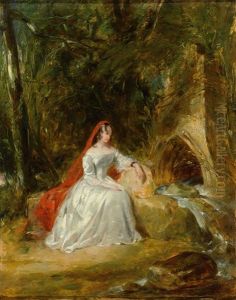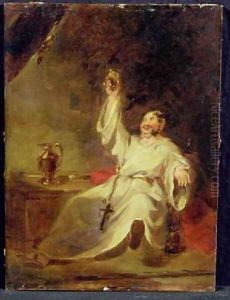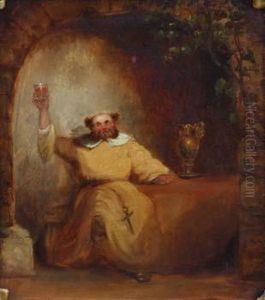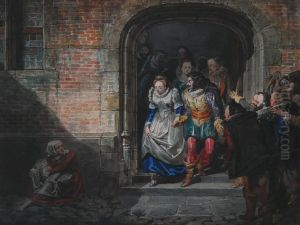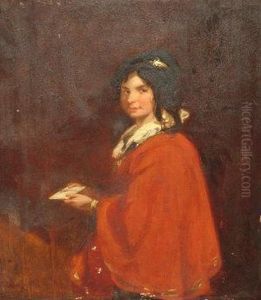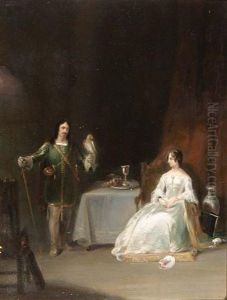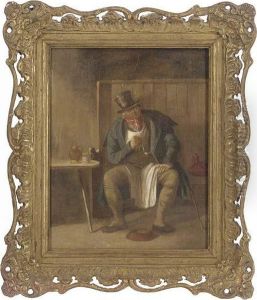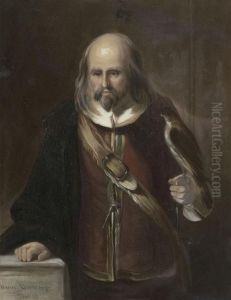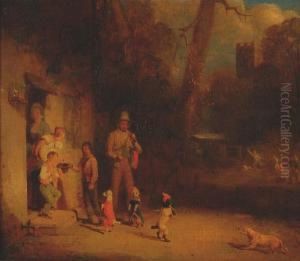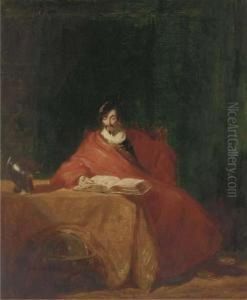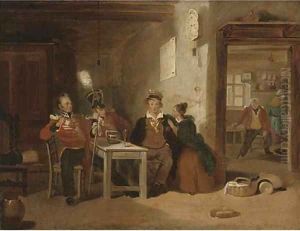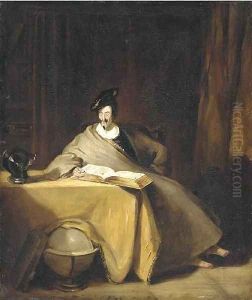Henry Liverseege Paintings
Henry Liverseege, born in 1803 in Manchester, England, emerged as a significant figure in the early 19th-century British art scene, despite his relatively short life. Liverseege was primarily self-taught, which makes his achievements in the field of painting all the more remarkable. He had a keen interest in literature and history, which often reflected in his choice of subjects for his artworks. His works were predominantly characterized by their detailed portrayal of historical and literary scenes, often imbued with a dramatic intensity that captured the attention of his contemporaries.
Liverseege's talent was evident from a young age, and he quickly garnered attention in the local art circles of Manchester. Despite his lack of formal training, he was adept at capturing the essence of his subjects, which ranged from characters of Shakespearean drama to scenes inspired by the works of Sir Walter Scott. His attention to detail and the vividness of his compositions won him acclaim, although his career was unfortunately cut short by his untimely death in 1832 at the age of 29.
During his brief career, Liverseege managed to exhibit several of his works, which were well received by critics and the public alike. His paintings were noted for their emotional depth and technical skill, qualities that endeared him to a wide audience. However, his health was always fragile, and he often struggled with illness, which ultimately led to his early demise.
After his death, Liverseege's works continued to be celebrated, and he was remembered as one of the most promising talents of his generation. His influence can be seen in the works of later artists who were inspired by his approach to historical and literary themes. Despite the brevity of his life and career, Henry Liverseege left an indelible mark on the world of British art, demonstrating the profound impact that talent and passion can have, regardless of the time one is allotted.
